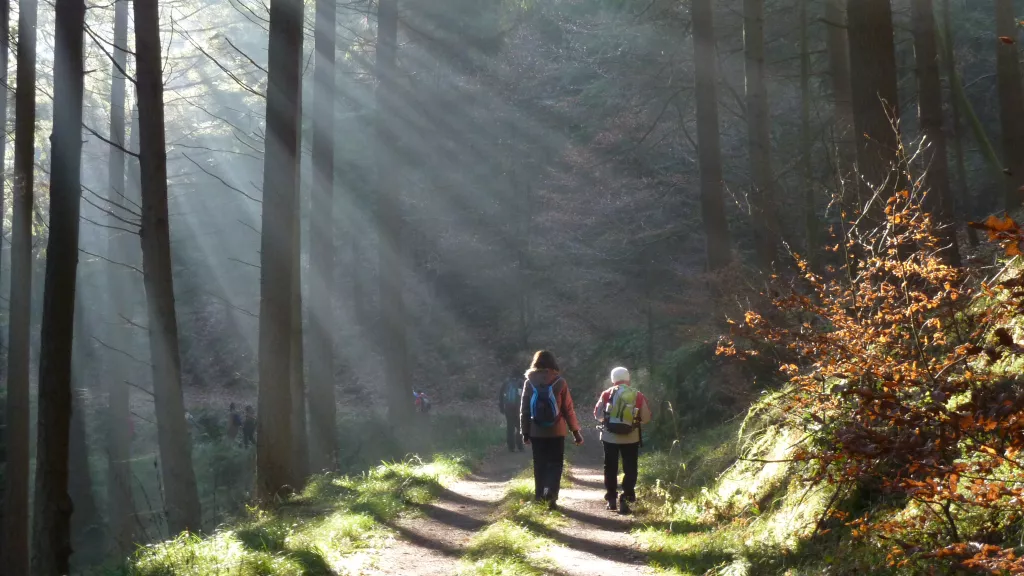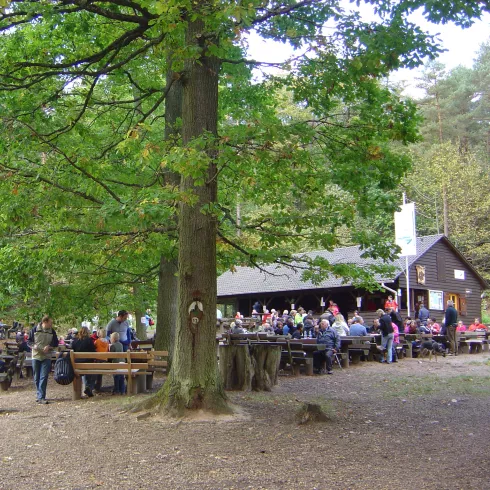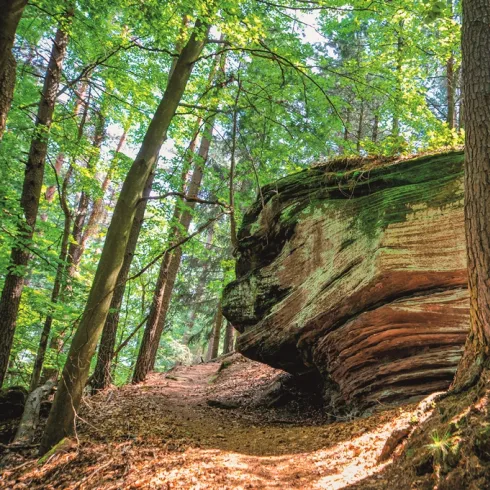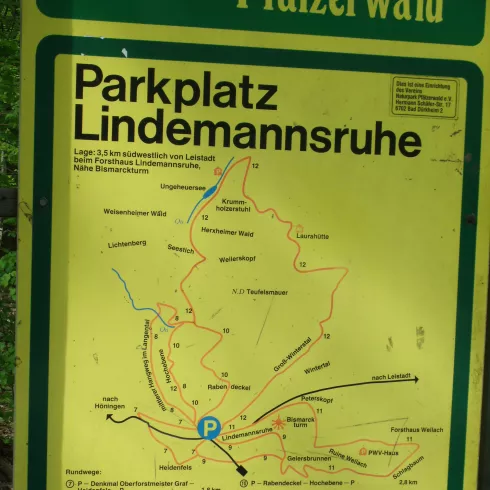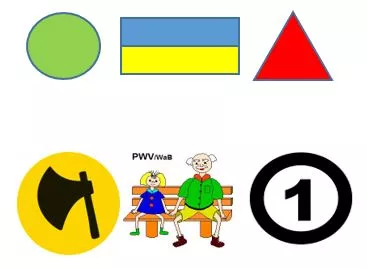Natural paths and trails.
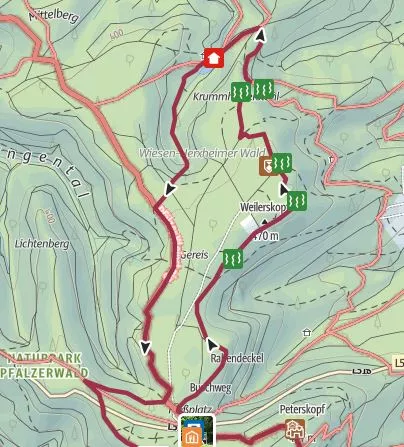
Our forest offers the perfect hiking alternative to the sunny vineyards of the German Wine Route. The network of hiking trails is well signposted, which is taken care of by the Palatinate Forest Association with its local groups and our volunteer trail wardens.
We have compiled a list of all our hiking tours in the forest. (for the English translation change languages in the top right corner of the appearing website)
To experience the tours directly in the forest with your smartphone, we recommend the official tour planner app of the state of Rhineland-Palatinate. Simply download it and get started (download manual in German language only).
From Weisenheim am Berg and Bobenheim am Berg you can start directly into the forest. At the edge of the forest and in the forest itself, there are parking lots for hikers with hiking signs, e.g. at Krumbachtal, Weilach or Lindemannsruhe.
On the Ganerbenweg, the Leininger Burgenweg and the Leininger Klosterweg you walk on certified premium circular trails. But the local circular trails - from short walks to half-day tours - also take you to natural monuments, vantage points and the rustic Palatinate Forest huts - our Palatinate answer to Germknödel (yeast dumplings) and Jagertee (hunter´s tea) in the Alps and, since 2020, an intangible cultural heritage of UNESCO.
As a stage hiker, you can spend several days on the Pfälzer Weinsteig hiking trail. You will always have the German Wine Route within reach, often even directly in view. An overview of the entire network of certified hiking trails in the Palatinate can be found in the Palatinate hiking menu.
Well signposted.
Where there are no road signs and no clear view, orientation is not always easy. Especially if you are not familiar with the area. So that you can move safely in our forest, our hiking trails are marked on trees and partly on separate posts at forks in the path.
Coloured bars and dots usually stand for the paths of the Palatinate Forest Association leading right through the whole forest. These trails are mainly long-distance hiking trails, but are well suited as connecting trails, for example if you want to combine two circular trails that are close to each other. They are marked on the hiking maps.
Trails marked with numbers and picture symbols are more likely to represent our local circular trails. The starting points are the hikers' car parks. If you follow these paths, you will return to the starting point of your tour.
Hikers beware!
Proper behaviour in the forest is extremely important for the preservation and protection of nature and the environment. We therefore ask you to observe the following recommendations for your visit to the forest.
Refreshments and picnics
More than 100 rustic Palatinate Forest huts attract numerous guests to the forest. As these cannot usually be approached directly, you should only use the official hikers' car parks if you come by car.
If you prefer to picnic in nature, you will find many secluded spots. In the Palatinate Forest and in the vineyards there are deliberately no litter bins so that no game is attracted or the litter blown away in the forest. It is best to take empty packaging and other rubbish back with you and dispose of it at home or in your accommodation. Remember that even a banana peel can take up to 3 years to decompose!
Campfires, smoking, barbecues
Open fires are not allowed in the Palatinate Forest because of the danger of forest fires - the only exceptions are the fireplaces at the 15 trekking sites, provided there is no general danger of forest fires. Smoking and barbecuing are also prohibited in the forest.
Cycling & mountain biking
Cycling is only allowed on forest paths and generally not on narrow hiking trails and paths. There are special trails for mountain bikers: the Palatinate Forest Mountain Bike Park offers a varied tour network of over 900 km with a single trail share of 10 - 25 %.
more information about the mountain bike park (German information only, gpx-tracks downloads available)
Mutual respect
Our beautiful recreational and active area, the Palatinate Forest, is divided into various nature conservation areas, which is why you should not leave the paths. Be considerate of other hikers and cyclists. On narrow forest paths, cyclists give priority to hikers. Dogs must be leashed so as not to frighten shy game.
Spending the night in the Palatinate Forest
In the Palatinate Forest there are nature friend houses that offer simple overnight accommodation.
If you want to experience nature up close, you can spend the night at designated tent and trekking sites (German information only) - but only with advance reservation. Motorhomes may only stay overnight at designated sites.
Emergency behaviour
Rescue points have been set up throughout the Palatinate Forest so that helpers can quickly reach victims of an emergency. Rescue points do not reduce the risk of accidents, but they do help people who are unfamiliar with the area to find their way around and describe their location in the forest. The rescue points are usually located at car parks, huts or easily accessible sites. From there, you can call 112 in an emergency and get help by giving the 7-digit number of the rescue point. By downloading the app "Help in the forest" to your smartphone, your location can be determined via GPS and the nearest rescue point can be displayed.
Each rescue point is known to the 8 rescue control centres in the country and is immediately identified with regard to its location when an emergency call is received.
When selecting the rescue points, care was taken to ensure that mobile phone reception is available in the majority of cases and that the rescue points are located directly on passable forest roads or on public roads that lead into forest roads. Although the rescue vehicles are usually not all-terrain, the rescue vehicles can thus reach the rescue points under normal conditions.
